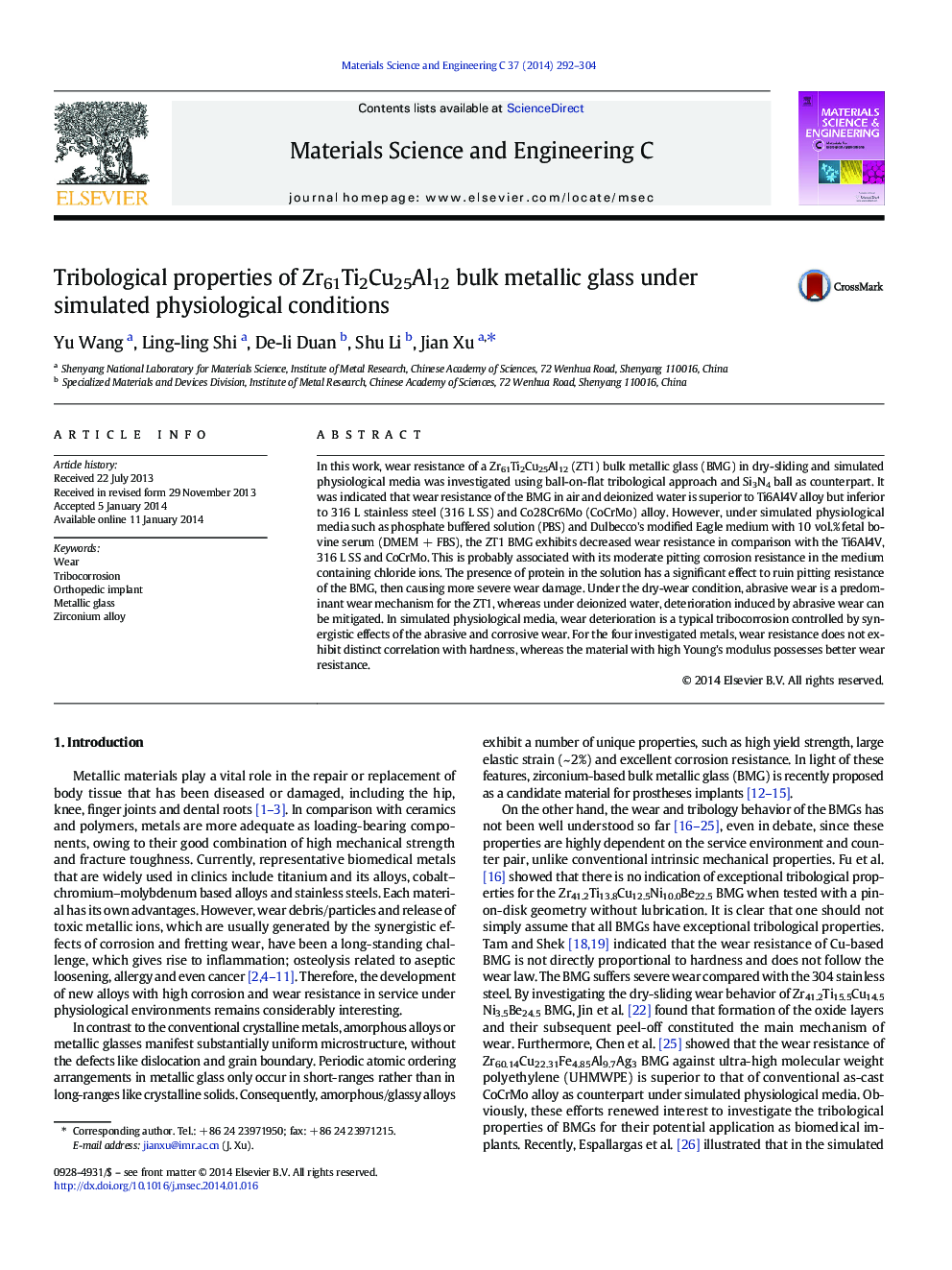| Article ID | Journal | Published Year | Pages | File Type |
|---|---|---|---|---|
| 1429012 | Materials Science and Engineering: C | 2014 | 13 Pages |
•Wear resistance of Zr61Ti2Cu25Al12 BMG in air is superior to Ti6Al4V.•Under PBS and DMEM + FBS, the BMG exhibits decreased wear resistance.•Presence of protein in solution causes more severe wear damage of BMG.•Wear resistance does not exhibit distinct correlation with hardness.
In this work, wear resistance of a Zr61Ti2Cu25Al12 (ZT1) bulk metallic glass (BMG) in dry-sliding and simulated physiological media was investigated using ball-on-flat tribological approach and Si3N4 ball as counterpart. It was indicated that wear resistance of the BMG in air and deionized water is superior to Ti6Al4V alloy but inferior to 316 L stainless steel (316 L SS) and Co28Cr6Mo (CoCrMo) alloy. However, under simulated physiological media such as phosphate buffered solution (PBS) and Dulbecco's modified Eagle medium with 10 vol.% fetal bovine serum (DMEM + FBS), the ZT1 BMG exhibits decreased wear resistance in comparison with the Ti6Al4V, 316 L SS and CoCrMo. This is probably associated with its moderate pitting corrosion resistance in the medium containing chloride ions. The presence of protein in the solution has a significant effect to ruin pitting resistance of the BMG, then causing more severe wear damage. Under the dry-wear condition, abrasive wear is a predominant wear mechanism for the ZT1, whereas under deionized water, deterioration induced by abrasive wear can be mitigated. In simulated physiological media, wear deterioration is a typical tribocorrosion controlled by synergistic effects of the abrasive and corrosive wear. For the four investigated metals, wear resistance does not exhibit distinct correlation with hardness, whereas the material with high Young's modulus possesses better wear resistance.
Graphical abstractComparison of Zr61Ti2Cu25Al12 metallic glass with the Ti6Al4V alloy, 316 L stainless steel and CoCrMo alloy for the specific wear rate and coefficient of friction, tested in air, deionized water, PBS and DMEM + FBS media under loading of 25 N.Figure optionsDownload full-size imageDownload as PowerPoint slide
